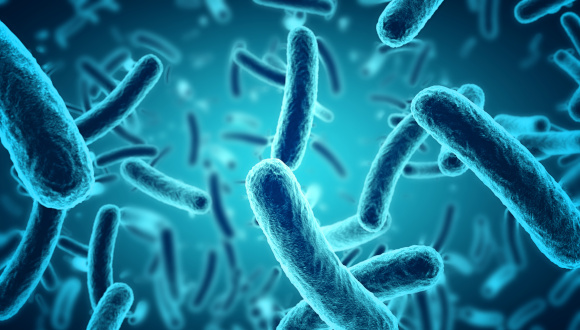“Good” bacteria that eliminate “bad” bacteria

TAU researchers engineer bacteria that inject toxins into other bacteria and cause their demise
Support this researchA new technology from Tel Aviv University (TAU) will make it possible to insert “good” bacteria into the body or diverse environments for the purpose of injecting toxins and eliminating “bad” bacteria. Researchers believe that the breakthrough, which can target different kinds of bacteria, may become a biological replacement for antibiotics whose efficacy has been on the decline in recent years.
The study was conducted by Dr. Dor Salomon, Dr. Biswanath Jana, and Kinga Kappel of the Department of Clinical Microbiology and Immunology at TAU’s Sackler Faculty of Medicine, and published in EMBO Reports.
The World Health Organization recently defined bacteria resistance to antibiotics as one of the most significant dangers to public health and food safety. Beneficial and pathogenic bacteria have fought each other over resources and nutrients since the dawn of time, and they have developed a variety of sophisticated mechanisms that neutralizes their competition. Understanding the mechanisms that mediate these bacterial wars will enable their utilization and conversion into new tools that can be used to treat diseases caused by antibiotic-resistant bacteria.
In the TAU study, researchers “borrowed” a toxin injection system known as a Type 6 Secretion System from a pathogenic bacterium and introduced it into a “friendly” bacterium, Vibrio natriegens. This “friendly” bacterium is not harmful to humans or animals and can survive and reproduce under a variety of conditions. The injection system is similar to a poisoned arrow shot from a bacterium towards neighboring bacteria.
Toxins carried on the arrow then mediate the elimination of competing bacteria. With the help of a central regulator protein that they identified, researchers were able to produce an “operating switch” for the system and cause it to activate only in response to its recognition of a desirable environmental condition. In addition, researchers proved it possible to control the type and amount of toxins that are loaded on the arrow, thus adjusting the system’s killing range.
“The system that we built allows us to engineer ‘good’ bacteria that can recognize pathogenic bacteria, attack them with toxins, and neutralize them,” Dr. Salomon explains. “We know how to change and control every component in the system and create a bacterium that neutralizes different strains of bacteria. This is proof of feasibility, showing that we have the knowledge and ability to create bacteria that take advantage of this killing system and may serve as antibiotic treatments. Such bacteria could replace the classic antibiotics that we currently use in a variety of scenarios.”
Researchers created the prototype in a bacterium occurring naturally in salt water. Therefore, it is particularly efficient at neutralizing bacteria in pathogens found in fish and other marine creatures used for food. “The system in its current form is predominantly suited for preventing and treating bacterial infections that affect the production of food from marine animals. Fish and other seafoods constitute a major food source in many regions around the world. Their productivity is severely impaired as a result of bacteria-borne diseases,” Dr. Salomon continues.
“Since we want to avoid pouring antibiotics into aquaculture farms, a biological solution such as the one we have developed is an effective alternative. Moreover, our system can also be adapted to treat pathogenic bacteria in humans, farm animals, plants, and the environment,” he concludes.
“Ramot, the Technology Transfer Company of Tel Aviv University, has filed a patent application to protect the technology and its application. Many companies in the field have already expressed interest in this sophisticated system,” says Keren Primor Cohen, CEO of Ramot.